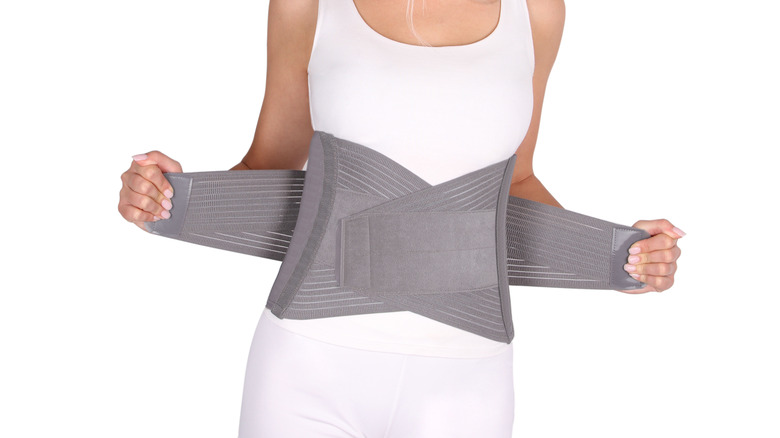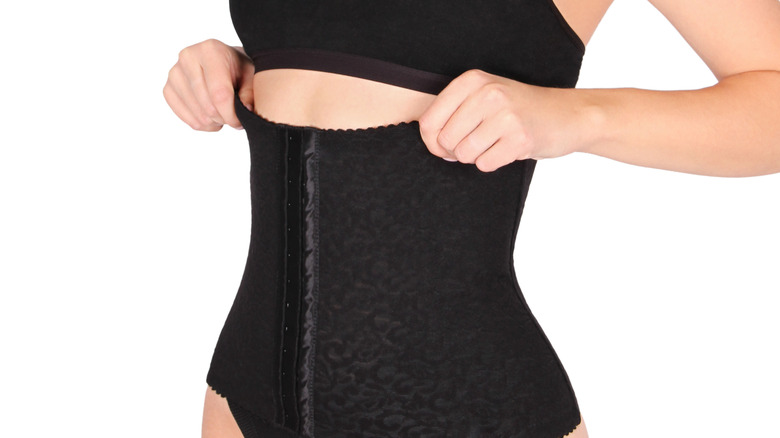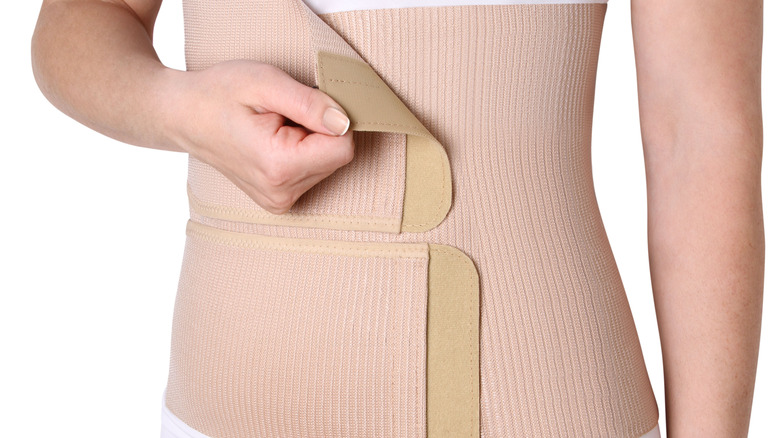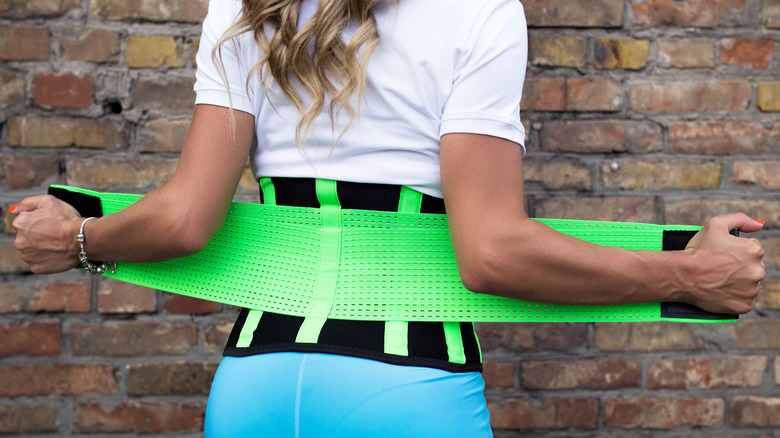Why You Should Think Twice Before Trying A Waist Trainer
We've all seen them on television or floating by in an ad while we scroll through our social media feeds. If you want a tiny waist, you have to have one — or so the ads and the Kardashians say. In fact, Kim Kardashian, a mother of four, sells them through her Skims line of clothing and makes sure to give them as gifts to all her postpartum friends so they can get their pre-pregnancy bodies back sooner. The garments in question are waist trainers that can be worn under clothing to create an hourglass figure, while the hope is they will help you eventually have a natural hourglass figure again, but do they work — and most importantly — are they healthy to wear?
In centuries past, women would have called waist trainers corsets. Who can forget those period flicks where women hang onto the bedpost for dear life while someone pulls their corset as tight as possible to give the illusion of a tiny, cinched waist? In fact, the opening scenes of Netflix's popular "Bridgerton" showed us just that. Corsets made their first appearance in Western culture in the 16th century, but truly gained popularity in the 18th century, promoting the ever-popular hourglass figure (via Vogue). Thanks to the Kardashians and other celebrities, they have made a comeback today.
What you get with 21st-century waist trainers
Today's waist trainers are made from thick materials like neoprene, latex, or spandex, closing in either the front or the back with zippers, velcro, or hook and eye closures that you typically find on a bra, according to Insider. They squeeze the waist in and keep it in cinched under outfits and even under and over gym clothes in the hopes that they can help you lose weight so one day you may not even need one.
"There's a historical aspect to waist training that goes back to the 1500s," Jaclyn Fulop, a board-licensed physical therapist, told InStyle. "Women would tighten corsets over a period of time to achieve a smaller waist size. Waist trainers these days are made of different materials and not usually worn as tightly, but they promise a similar effect ... They claim to tone, slim, and shape the waistline — taking inches off the belly."
Do waist trainers deliver on what they promise?
While waist trainers can help a woman drop a tiny bit of weight, they do not promote fat loss. "There may be some water weight shed through sweating from wearing a waist trainer," Kelley Vargo, a certified strength and conditioning coach, told InStyle. "If your waist appears to be smaller after a few weeks, it's likely due to water loss and muscle atrophy."
However, a waist trainer can improve posture, as it pretty much forces a woman to stand up straight. If she is wearing one when working out, it can improve form when lifting weights, according to InStyle. They can also make you feel fuller faster by putting artificial pressure on your abdomen, so you may eat less at meals and at snack time, but that's pretty much where the small benefits of a waist trainer stop, making you look at the drawbacks, especially the health drawbacks.
Waist trainers can be hazardous to your health
Imagine having something tightly pulled around your waist, squeezing in your abdomen, and pushing parts of your middle in an upwards direction towards your lungs. If you think it might be hard to breathe, you are correct.
"Waist trainers interfere with the natural pattern of breathing, not allowing the diaphragm to fully descend as the lungs fill with air and compressing the outward motion of the ribcage," Natalie Toshkoff, a New York-based pelvic floor therapist, told Insider. "This can lead to using smaller accessory muscles in your shoulders and neck for breathing, leading to shallower breaths and tension in your upper body."
In fact, a 2018 study of women taking pulmonary function tests found that women wearing waist trainers showed shortness of breath, sweating, and increased pain while breathing in and out. Additionally, postpartum women trying to get their shape back might be the women who need to stay away from waist trainers the most, as the garment can cause pelvic floor and bladder issues, according to InStyle.
"In the early days postpartum, the internal organs, uterus, and pelvic floor musculature are moving through a massive healing state and require the ability to move back into their pre-pregnancy spaces," Brooke Cates, a prenatal and post natal exercise specialist, told In Style. "Strapping on a waistband, sucking in your belly, and tightening an external object around your torso can sometimes do more harm than good."



